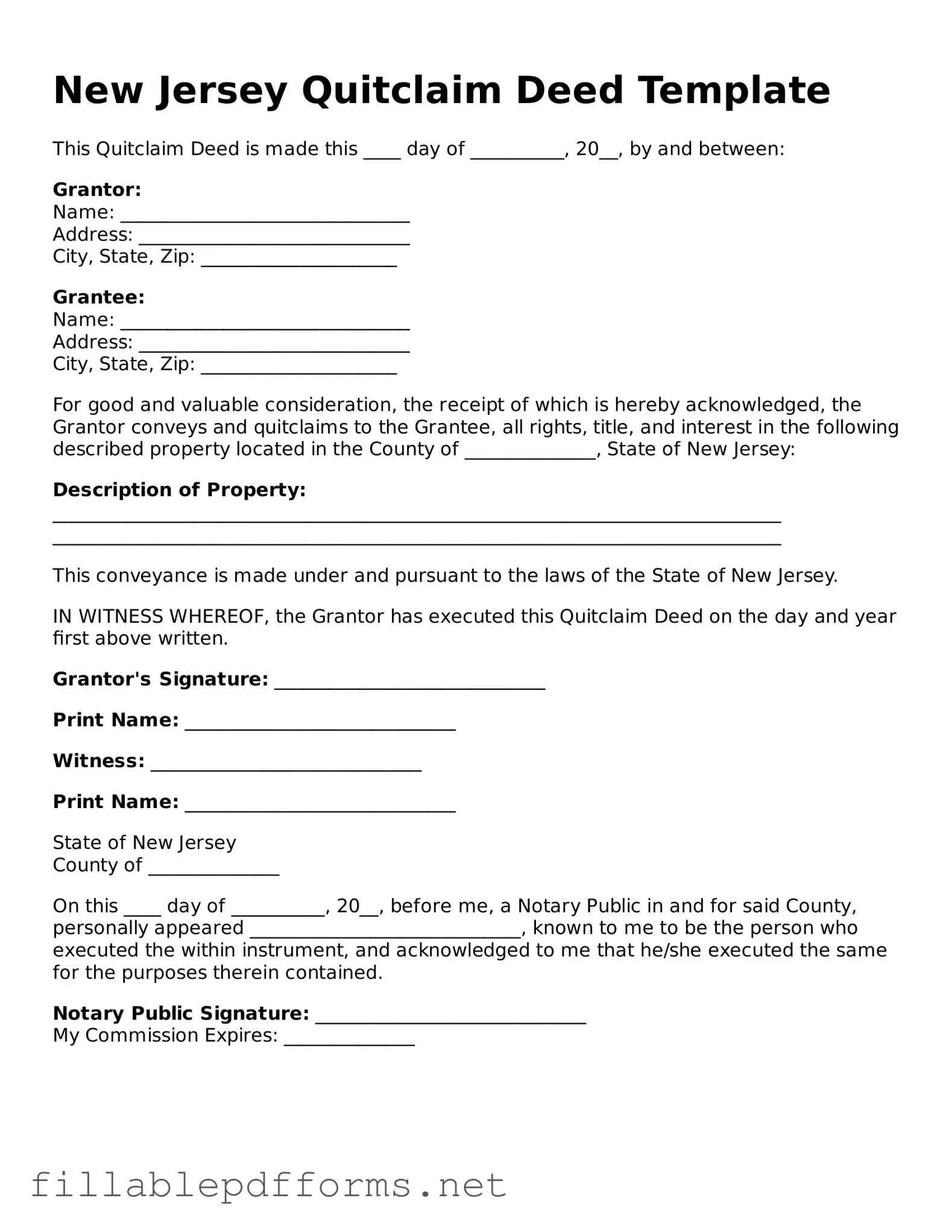The New Jersey Quitclaim Deed form serves as a vital legal instrument for individuals looking to transfer property ownership without the complexities often associated with traditional sales. This form allows the grantor, or the person transferring the property, to convey their interest in the property to the grantee, or the recipient, with minimal formalities. Unlike warranty deeds, quitclaim deeds do not guarantee that the grantor holds a clear title to the property, nor do they provide any warranties regarding the property’s condition. This makes them particularly useful in situations such as transferring property between family members, handling divorce settlements, or clearing up title issues. The form requires specific information, including the names of the parties involved, a description of the property, and the signature of the grantor, which must be notarized to ensure its validity. Understanding the implications and proper use of a quitclaim deed is essential for anyone engaged in real estate transactions in New Jersey, as it can significantly impact future ownership rights and responsibilities.
